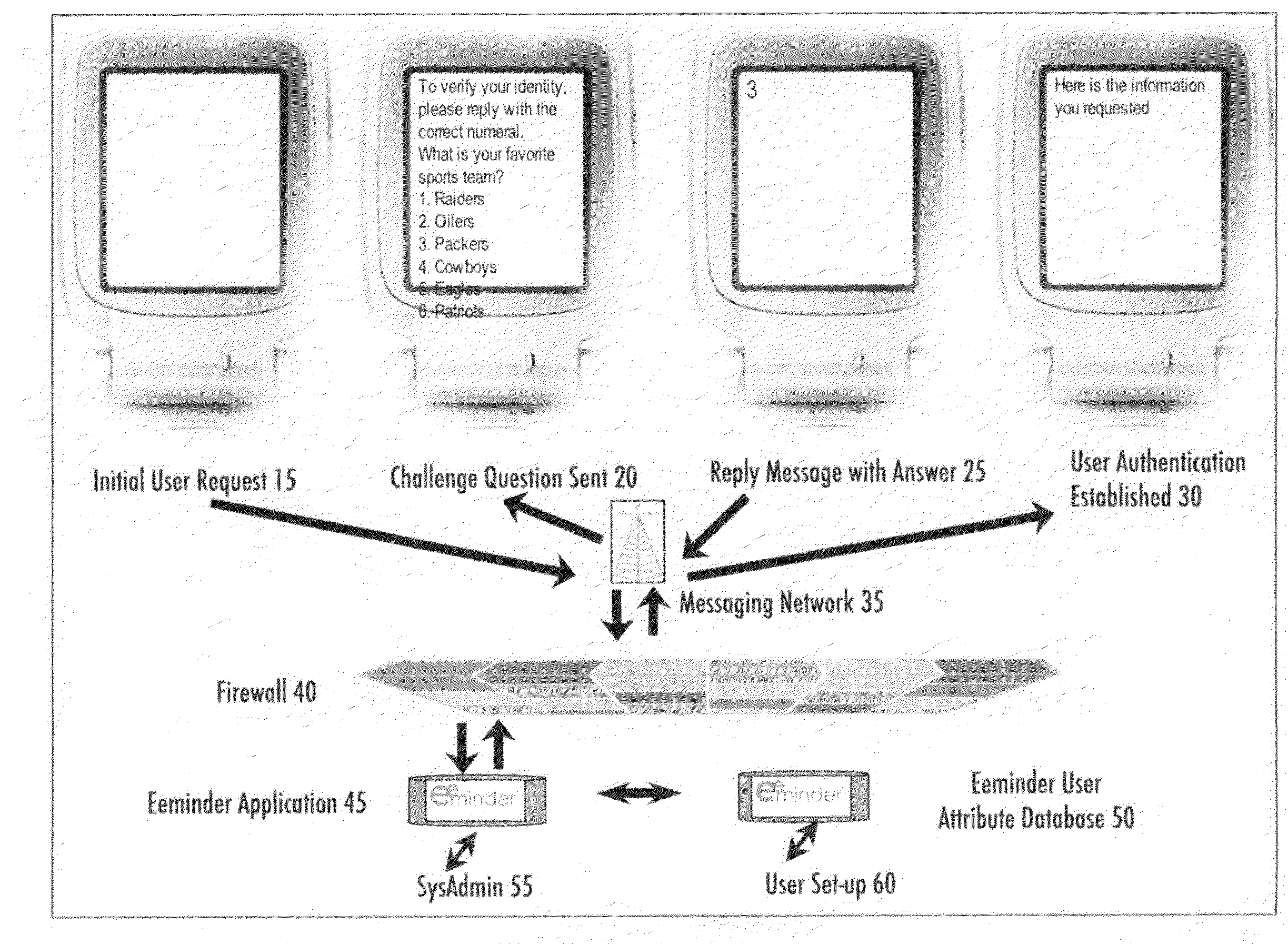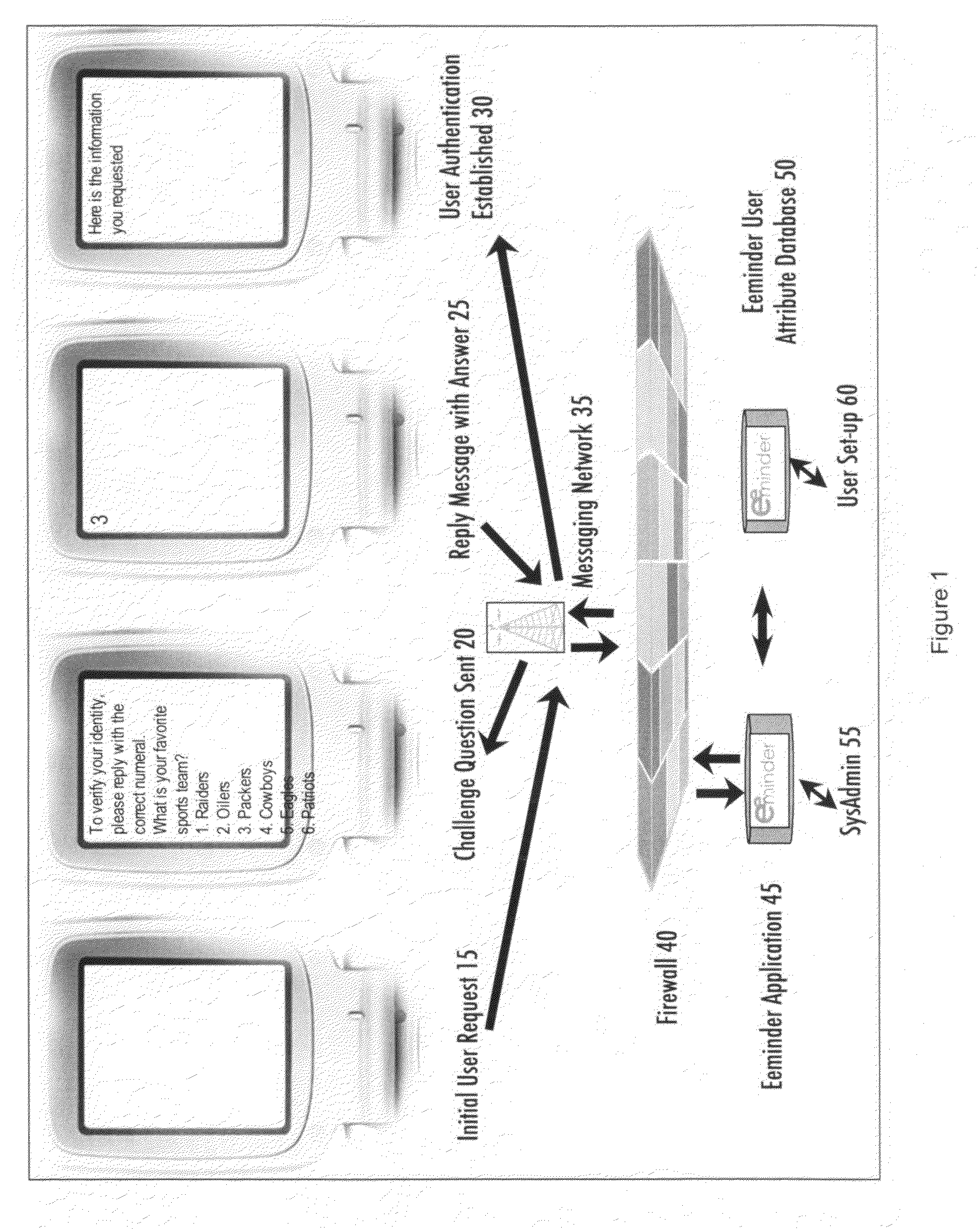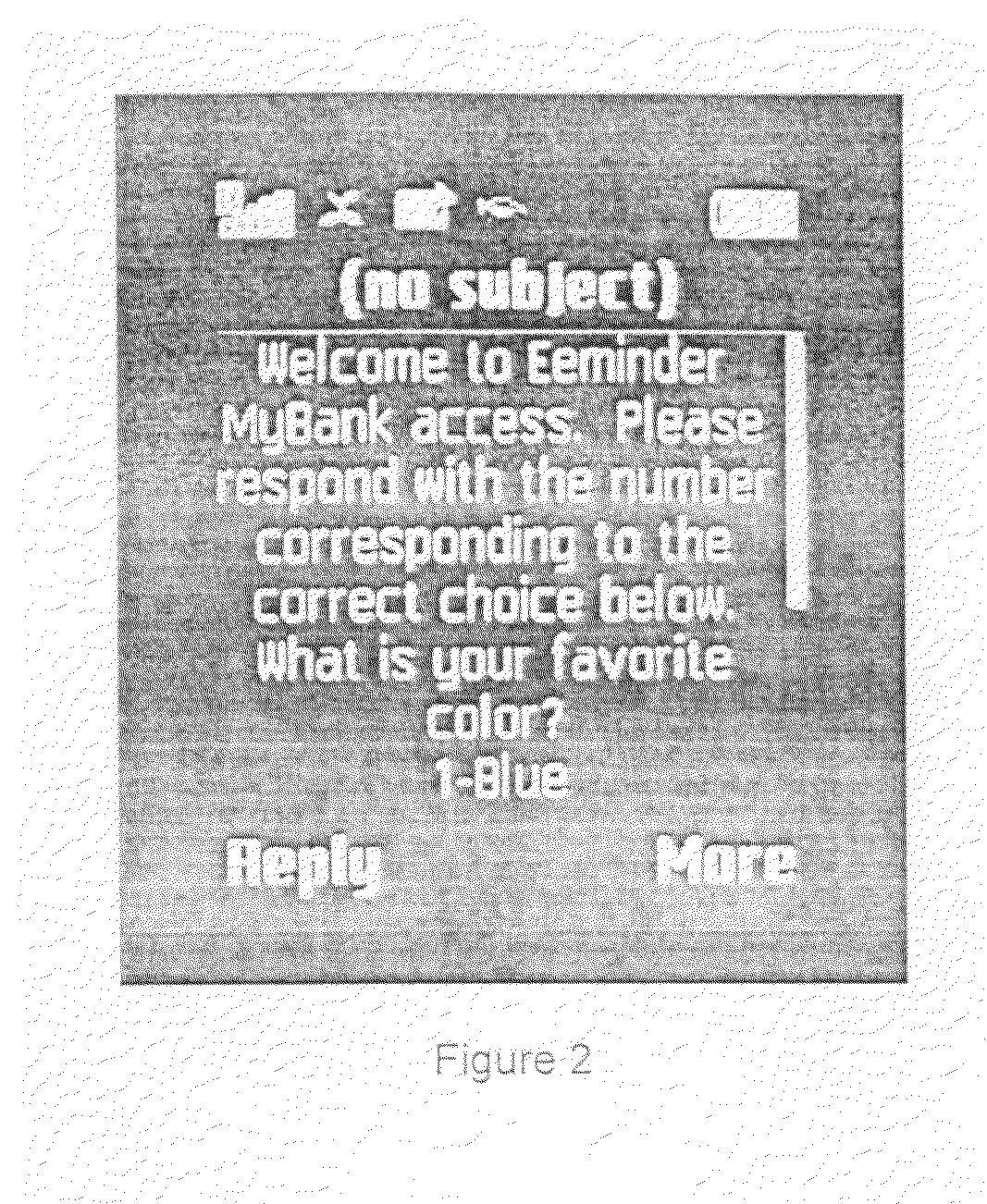[0008]Generally speaking, exemplary embodiments of the present invention enable users with a generic or standard messaging client (either email, SMS messaging, or Instant Messaging) to send and receive messages to and from a datasource or database server. The messages received and sent as replies include content of multiple choice questions containing personal preferences or other not widely known information about the user. By replying with the correct multiple choice response, either as an integer or alphanumeric character corresponding to that choice, or to successive challenge and response questions with the correct choice, together with the knowledge of other unique identifiers, for example in one embodiment that the messages are being sent to and received from a unique cell phone number or email address corresponding to the user, and also taken together with some pre-established time period (commonly called a timeout period by someone who is versed in the art), establish to the degree required by common security and authentication standards that the user is in fact the user whose information is attempted to be accessed. The single default factor in the authentication of a cell phone used for messaging is the phone number. If the user's phone number is registered as part of his / her profile by the information source, then receipt of a message from that phone number or phone's unique email address constitutes one factor of authentication. The present invention extends this single factor to a potentially unlimited number of factors, depending on the preferences of the owner of the information source. The second factor of authentication is the reply to a message sent from the information source to the cell phone. When the user replies to this message, the information source gets another factor of verification that it is in fact communicating with the cell phone owned by the user. The third factor of authentication is the user's reply to a randomly selected multiple choice challenge question sent as a message from the information source to the user's cell phone. The question could be for example “what is your favorite color” and the choices are presented as “1-blue 2-red 3-green 4-pink 5-magenta”. The user only needs to send a reply message with the integer corresponding to his / her choice in the body of the message, increasing ease of use by limiting typing by the user to one keystroke. The enumerrated choices are randomly ordered by the system for each use of the challenge question. The fourth (through whatever level of factors a particular embodiment requires) operate on the same design as the third factor described above. They are randomly chosen by the system during each user session and the choices for each are randomly ordered in each challenge question message. Multiple choice questions include but are not limited to what is your favorite color, what is your favorite food, what is the first name of your best friend, what is your favorite city, what is your favorite sports team, what is your favorite movie or TV show, what is the name of your favorite animal, what is the first name of your favorite teacher, what is the name of your favorite hero or someone that you look up to, what is the name of your favorite restaurant. In executing the present invention, the system uses the following logical process in one embodiment of the invention. Possible answers to the picked challenge questions are picked randomly from the complete list of possible answers corresponding with the picked challenge question. All of the answers are displayed as lower case with the first letter of each word capitalized. After this, the real answer, as picked by the end-user, is compared to all 5 of the possible answers for a match. If there is no match, then one of the 5 possible answers is substituted with the real answer. Afterwards the 4 possible answers with the real answer, to the picked challenge question, are randomly sorted, with the number 1 assigned to the now first answer, number 2 to the second, and so on; for display to the end-user. The end-user simply needs to reply the number 1 to 5 to answer the challenge question. Although it is possible to guess 1 out of 5 (20% chance), combining this strategy with the remaining security authentication factors makes the entire process impossible simply by guessing one challenge question.
[0009]According to an exemplary embodiment, a method that authenticates a user using message-based challenge and response questions generally includes establishing an address to which an initial request email message can be sent. This address can be an email address, cell phone number, or instant messaging address, among other options. This message contains a question relating to personal information about the alleged user which someone other than the actual user would not know. The message may present the choices for response as mulitple choice answers, each enumerated with an integer or other unique alphanumeric character. To reply to the message, the user sends a reply message with content of either the correct enumerated response (for ease of use as there is only one character to type in that case) or the complete answer. If the reply contains the correct answer, one step in the authentication process has been satisfied. Another challenge and response question may optionally be sent containing different personal information about the alleged user. The enumeration of the response options for this second question reset so that the first answer corresponds to the first digit or alphanumeric character in the sequence of enumeration and the same enumeration choices are re-used on each successive challenge question. Due to the fleeting connectivity with messaging devices, after a pre-established time period has passed without a response from the user or other activity, the session is timed out, i.e. ended. A new challenge and response sequence begins when the user attempts to access the system again. At all times the questions being sent to the alleged user are randomized so that the same questions do not get sent over and over. Also all of the response options in the message, which consists of one correct choice and many incorrect but similar choices, are randomized in order.
 Login to View More
Login to View More  Login to View More
Login to View More 


